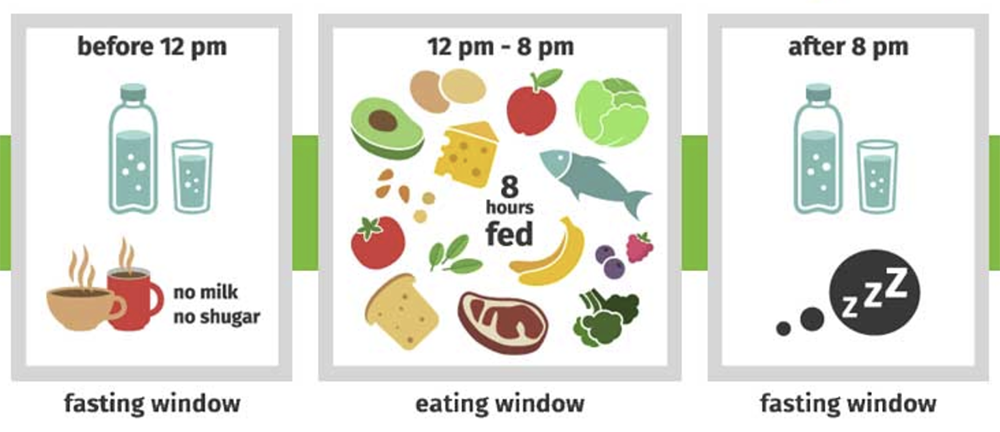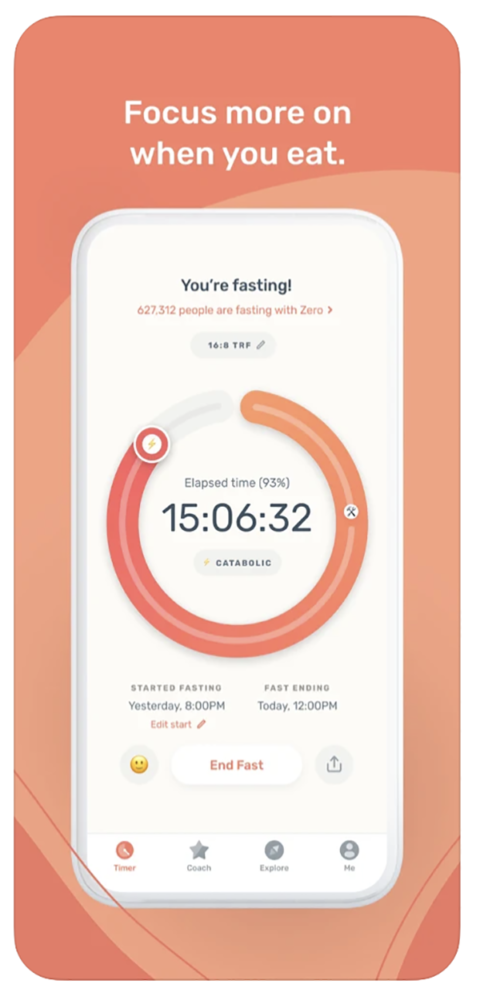Everything You Need To Know About Intermittent Fasting
Intermittent fasting (IF) has become one of the most popular health and fitness trends worldwide. Research shows that it can be used to lose weight and improve body functions. One conducted by Harvard University on rats showed improved blood sugar levels, blood pressure, and cholesterol. The results are similar in human beings, but how do you do intermittent fasting, and is it safe?
WHAT IS INTERMITTENT FASTING?
IF is a feeding pattern that alternates between periods of eating and fasting. You only eat during a specific time window then you resume fasting. It is not about what you eat; it is about when you eat.
Fasting started in the stages of evolution when human beings were hunters and gatherers. Sometimes they couldn’t find anything to eat, so they evolved to have the ability to survive without food for an extended period.
Apart from being used by the fitness and medical community, fasting is also common among religions for spiritual purposes.

TYPES OF INTERMITTENT FASTING
There are several main ways to do intermittent fasting:
- Time-restricted eating: This method can either be 14/10 or 16/8. You fast for 14-16 hours, then have at least two meals within an 8-10 hours window.
- 5:2 approach: You normally eat five days a week and limit yourself to one meal (500-600 calories) per day for the remaining two days. For example, you can normally eat all week, apart from Tuesday and Friday, when you restrict yourself to one meal a day.
- Eat-stop-eat: This approach has been popular in recent years. It involves fasting for 24 hours, 2 to 3 days a week. For example, if your last meal is at 1 pm, your next meal should be 1 pm the following day.
- Alternate day fasting: This is when you fast every other day but allow 500 calories during your fasting window. This approach is not suitable for beginners, and it isn’t easy to sustain.
People also fast for 36, 48, and 72 hours. However, going for long periods without food can make your body store more fat in response to starvation. Every method of IF works differently for different people. Find out which one is best for you and get on with it.

WHAT TO TAKE DURING IF
When fasting, you can only take water and zero-calorie beverages such as unsweetened coffee or tea.
During your eating window, avoid junk food, fries, and treats for desired results. Eat nutritious food and unrefined carbohydrates such as grains and healthy fats, e.g., avocados and eggs. Be careful with your choice of toothpaste, as flavored ones can also spike your insulin.

HOW DOES INTERMITTENT FASTING WORK?
When you eat, your blood sugar and insulin levels are high. Insulin is the hormone that allows your body to convert sugar into energy. This is called the fed state. Extra glucose is converted into glycogen and stored in the muscles and liver. What you eat determines how long you stay in the fed state, but it lasts an average of 3-4 hours.
Between 4-8 hours after eating, your blood sugar decreases to near normal because insulin is delivered to the circulatory system. After 8 hours, your blood sugar decreases. You begin to feel hunger and fatigue.
By 12 hours, your body starts getting energy from glycogen stores and digging into body fat stores. At this point, your blood sugar is low, and the insulin sensitivity is high, which can be useful for people with type 2 diabetes. 12-18 hours into fasting, your body enters ketosis, whereby the liver uses fat to produce ketone bodies. This results in fat loss, appetite suppression, and increased mental clarity. After 24 hours, your body begins to break down old and damaged cells (autophagy), reducing inflammation, slowing down aging, and preventing diseases such as Alzheimer’s disease.
During 24-48 hours, the growth hormone is stimulated, facilitating muscle growth and repair, and healing of the body. After 72 hours, the immune system starts to regenerate, which reduces the effects of chemotherapy for cancer patients.
Try the Zero: Fasting & Health Tracker by Big Sky Health. Featured in Women’s Health, The Tim Ferriss Show and more, Zero is the world’s most popular fasting app. Track your progress on your iPhone or Apple Watch with Apple Health integration to sync your weight, resting heart rate and sleep. Download the Zero app to get started for free, or unlock premium features with Zero Plus.
BENEFITS OF INTERMITTENT FASTING
- Cellular repair and removal of waste materials from your body cells
- Improves immunity against diseases
- Weight loss and reduction of belly fat due to a drop in insulin levels and an increase in the human growth hormone that facilitates the breakdown of fat for energy. IF also increases metabolic rate and causes less muscle loss.
- Reduces insulin resistance, lowering blood sugar levels, and healing or protecting you from type 2 diabetes.
- It prevents aging and protects you from diseases by reducing inflammation and oxidative stress in your body.
- Improves heart health
- Effects on metabolism may help reduce cancer and the effects of chemotherapy.
- It improves brain function and protects you against strokes.
- Protects you from Alzheimer’s disease
IS INTERMITTENT FASTING SAFE?
IF is safe, but not for everyone. People with a history of an eating disorder should not attempt IF, as it may cause binge-eating due to the restrictions. Other people who should avoid IF include pregnant women and children. If you have a chronic disease, you should consult your doctor for guidance on IF. You should also be aware of certain side effects such as irritability, hunger, and low energy.
When practicing IF, it is very important to hydrate. You can also lick small amounts of pink Himalayan salt to replenish body nutrients and prevent nausea. Intermittent fasting is a lifestyle; you just have to find your plan and stick to it.


